[dropcap custom_class=”normal”] My eaves dropped at dinner last night and I heard someone ask “Why buy Nigerian?” with the main bone of contention being the quality of made in Nigeria products.
If you ask me, (even if you don’t I’d still tell you anyway) the concern of quality particularly is a little bit played out. Nigerians are not only becoming more innovative; most are also paying supreme attention to detail and quality. [/dropcap]Continue reading
Bellafricana ACE Awards 2017: Complete List of Nominees
[dropcap custom_class=”wh”] The complete list of Bellafricana ACE Awards nominees have been released and it is with great pleasure to see that well deserving brands made it on… [/dropcap]
Adding value and creating impact is a noble cause that should be awarded. This by no means undermines or belittles the efforts of the brands that weren’t nominated, far from it.
Continue reading
Bellafricana African Creative Exhibition and Awards
[dropcap custom_class=”normal”] The management of Bellafricana is officially announcing their first edition of Bellafricana African Creative Exhibition and Awards coming up on the 17th of April, 2017. This Annual Creative Exhibition and Award (termed Bellafricana ACE Awards) is fully endorsed by Nigerian Export Promotion Council (NEPC), Lagos Chamber of Commerce and Industry (LCCI), the Nigerian-British Chamber of Commerce (NBCC), Nigerian-American Chamber of Commerce (NACC) and the Nigeria Britain Association.
The theme is “Celebrating Creativity and Innovation”, as it is time to encourage and reward the hardworking creative business owners for impacting lives and the economy. [/dropcap]
Continue reading
The Bold of Art: Chief Nike Okundaye Davies
[dropcap custom_class=”normal”] My first encounter with Chief (Mrs.) Nike Okundaye Davies was when I visited her Art Gallery at Ikate Elegushi roundabout Lekki-Epe Expressway, Lagos, Nigeria. She is a very lovely and amiable person and I am glad to do this write up on her.
Several years ago I saw a road sign saying “Nike Art”, on my way to my neighbour’s wedding. I think that was my first time of being awake while passing through Lekki-Epe expressway.
My name is Nike and I love art and every form it is presented in. So you can imagine how fast my attention was piqued when I saw this sign. That sign remained in my memory for a long time…. [/dropcap]
Continue reading
Art, Exhibition and Fashion: Highlights of GTBank Fashion Weekend
[dropcap custom_class=”normal”] Are you familiar with that feeling of pure delight that comes when you see so many creativity such as Arts, Exhibition, Fashion etc. going on in one location? It’s spectacular!
This was the amazing feeling I got to experience at the GTBank Fashion Weekend. If you missed the event, here is a little recap to share the lovely experience with you…. [/dropcap]
Continue reading
Highlights from Chevron Bazaar 2016 December Edition
[dropcap custom_class=”normal”] Hello beautiful people, last weekend we partook in the 2nd and final Chevron Bazaar for the year 2016. The Chevron bazaar holds twice every year showcasing Afrocentric products from around Africa.
In this December edition, we represented several of our Bellafricana Verified business owners by displaying their products. There were so many beautiful and creative artisans present at the bazaar that had quite a lot of interesting works to display.
Come along! Let’s hold your hands and take you on a tour round the bazaar. Share the experience through our eyes (pictures)…. [/dropcap]
Continue reading
The History Of Adire Textile
Adire textile, pronounced as Ah-DEE-reh is an age old indigo die textile indigenous to the Yoruba tribe of the Southwestern Nigeria. This textile is rich in beauty and culture as much as it has a rich history.
In this post, you will learn about the history of the Àdìre textile and follow its’ progression through time. How did the textile come about, where was it first made, who wore it first, how did it travel to other tribes and countries, where it is on the global sphere?
Yes, we had all these questions and more and knew many people out there too must have pondered on this also. To answer some of these questions, we at Bellafricana have done an extensive research on the subject to share the knowledge with the world. Let’s read on…

The Origin of Adire Textile
Let us begin with a little introduction for the benefit of those unfamiliar with this textile. Adire, is a Yoruba (a tribe in Southwestern Nigeria) word for tie and dye. It was first made by Yoruba women of old by using a variety of resist-dyeing techniques.
As the translation of the name suggests, the earliest pieces of Adire were probably simple tied designs on cotton cloth handspun and woven locally. [1]
I remember seeing a movie called “Odùduwà“, where the first wife of Oduduwa thought women how to tie and dye clothes. The ideology according to that movie’s story line was that before tie and dye textile came, clothes were only available in white colours.
While putting this write up together, we discovered that the origin of Adire might be traced to the archaeological discovery in some Tellem burial caves of Mali. Among the archeological findings, is a cap bearing the extant and popular Osubamba motif common in the Adire art of the Yoruba people.
This coupled with the fact that the Yoruba of Old Oyo kingdom exported their art across and beyond West Africa through trade, military activities and political dominance. [2]
I would say this supports the notion that Adire was first produced in Jojola’s compound of Kemta, Abeokuta by Chief Mrs. Miniya Jojolola Soetan, the second Iyalode (Head of Women) of Egba land. She then passed on the process to her children and onward to the future generations. [3]
Related Post: The History Of Aso-Oke Textile
The Making of Adire Textile
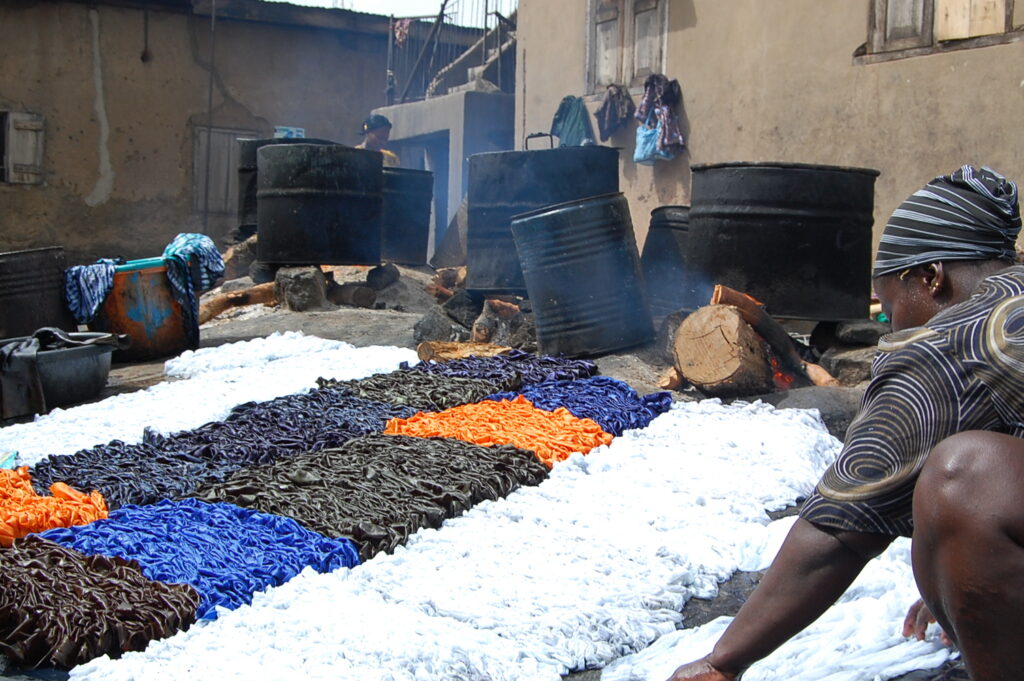
The first Adire material was made with Teru (local white attire) and Elu (local Dye) made from elu leaf which is planted in the Saki area of Oyo state. There was an increase in tie-dye makers and artistic endeavours in the 20th century when more fabrics imported from European merchants became available for dyeing.
You might wonder, why bother tying the cotton fabric before dyeing it? The simple answer to that is, the tying method prevents the absorption of dye to the particular area of the fabric that is tied. [4]
In an academic research published in the Journal of African Studies, the researchers; Gausa Solomon and Abubakar Ezra, stated that Adire patterns are made by pleating of the cloth. This is done so that the colour is kept from inside of the folds by knotting and dyeing it or stitching with raffia fiber from banana leaves or thread. [5]
Related Post: Adire Cloth in Nigeria: A Book Review
When more cotton fabrics to dye with became available in Nigeria, new techniques of resist dyeing were developed. According to Wikipedia, there are three primary resist techniques used in Nigeria presently:
Oniko: This process involves tying raffia around hundreds of individual corn kernels or pebbles to produce small white circles on a blue background. The fabric can also be twisted and tied on itself or folded into stripes.
Alabere: Stitching raffia onto the fabric in a pattern prior to dyeing. The raffia palm is stripped, and the spine sewn into the fabric. After dyeing the raffia is usually ripped out, although some choose to leave it in and let wear and tear on the garment slowly reveal the design.
Eleko: Resist dyeing with cassava paste painted onto the fabric. Traditionally done with different sizes of chicken feathers, calabash carved into different designs etc., in a manner similar to block printing. Since the early twentieth century, metal stencils cut from the sheets of tin that lined tea chests have also been used.
The simplest design for tie and dye is made by pulling up portions of the cloth at an interval, and either knotting or binding round them before dyeing. The tied portion is later removed after dyeing thereby creating a pattern of circles.
Related Post: Nike Art Gallery
In some situations, seeds or pebbles are sometimes tied into the cloth to create patterns. Also, some impressions may be sown into the fabric with thread and the stitches drawn up tightly before dyeing
Click play below to watch the video documentary of Adire textile amongst Yorubas by Thorolf Lipp.
Adire’s Journey Through The Globe
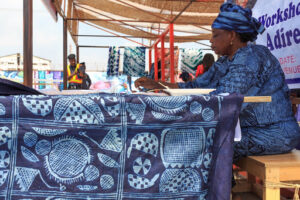
So many skills of African heritage were transported from country to country or entirely out of the continent through traders. Some of these transition came about either through adventurous traders who traded goods from country to country or through avenues such as slave trading.
Related Post: African Black Soap: The History, Components and Benefits
During the slave trade many slaves were skilled in weaving; the skill was used by the slave owner as another form of income. This is one of the ways some part of the African cultural heritage travelled from one continent to the other.
In those days, textiles were also used as a form of identity with each tribe having their own unique patterns which also made it easy to spot outsiders. In the case of Adire, it is said that for a long time, people who were not from certain families were not allowed to partake in tie-dye production as it was a part of the family’s heritage.
History has it that the tie-dye technique became recognised as a form of art in several countries across the globe. A publication on Tie-Dye US has it that, tie and dye became all the rage during the Vietnam War period.
This was when people craved peace and freedom from the starched idea of parents and authority. Then, tie-dye was a form of artistic expression (as well as protest) for the hippie, psychedelic generation who were free spirited and uninhibited during this difficult time in American history.
These artistic peace-lovers embellished t-shirts, curtains, tapestries, pants, and anything else that would proclaim their individuality! Tie-dye made people happy then, as it does today! It has remained the utmost symbol of the sixties! And, in all it’s forms, tie-dye is not only an art of fabric, but a piece of our world history. [6]
Related: Adire Cloth in Nigeria : A Book Review on Adire Textile
Ways Adire Has Been Used in History Till Date
In clothing, there are endless possibilities in what you can do. Our founder at Bellafricana, Bukky Asehinde, can’t get enough of the Adire textile. I added a lovely picture of her looking absolutely stunning in one of her dresses made from adire.
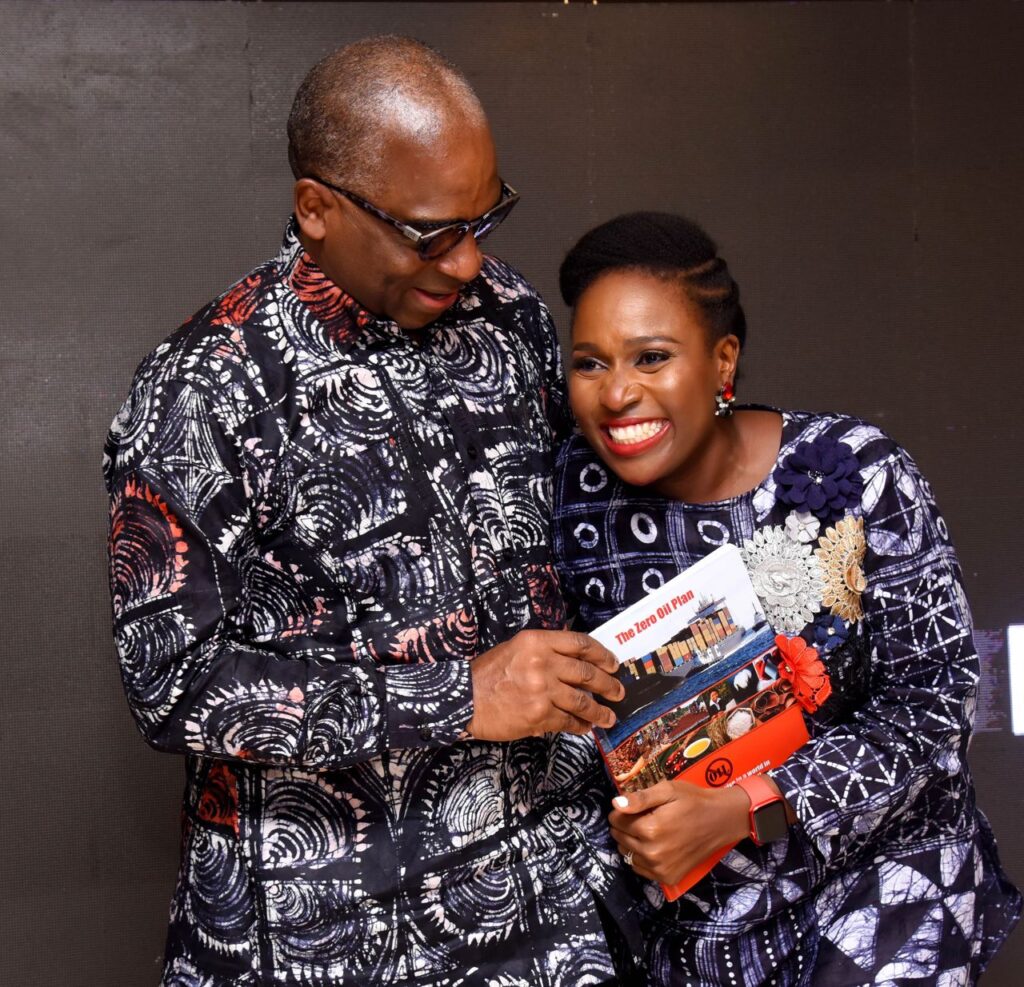
Today, the Adire textile is no longer limited to being used as clothing material alone. It is now being used creatively in different ways. You can use it to make note books, throw pillows, wall arts, lamp shades etc.

You will see below, the way Bellafricana creatively uses Adire on the books we produce on commission as souvenirs for clients’ weddings, birthdays, company events and so much more. The textile comes out so beautifully and perfectly that you might be tempted to keep them all for yourself instead of handing them out to your guests eventually. This is true for most our books really.
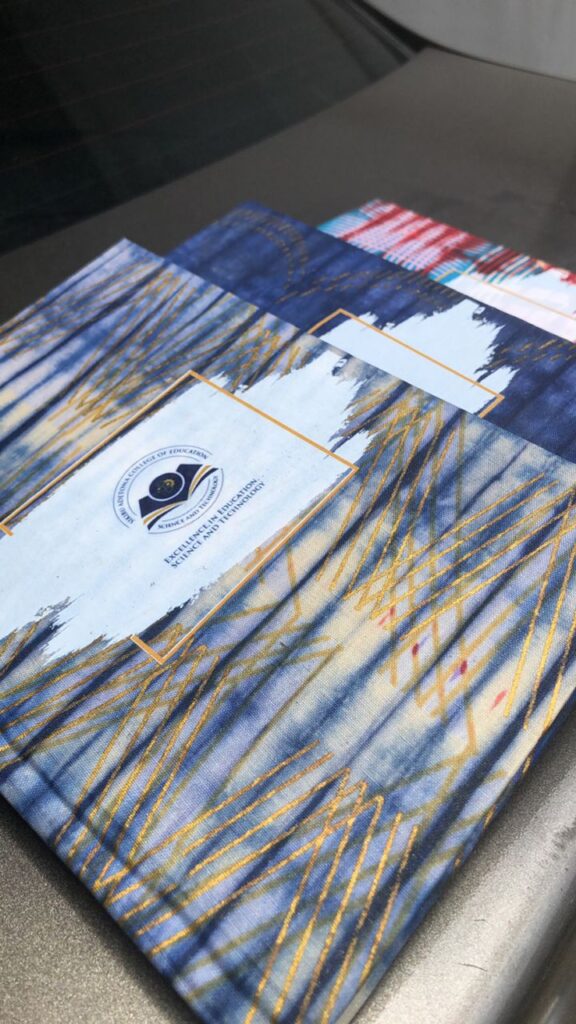
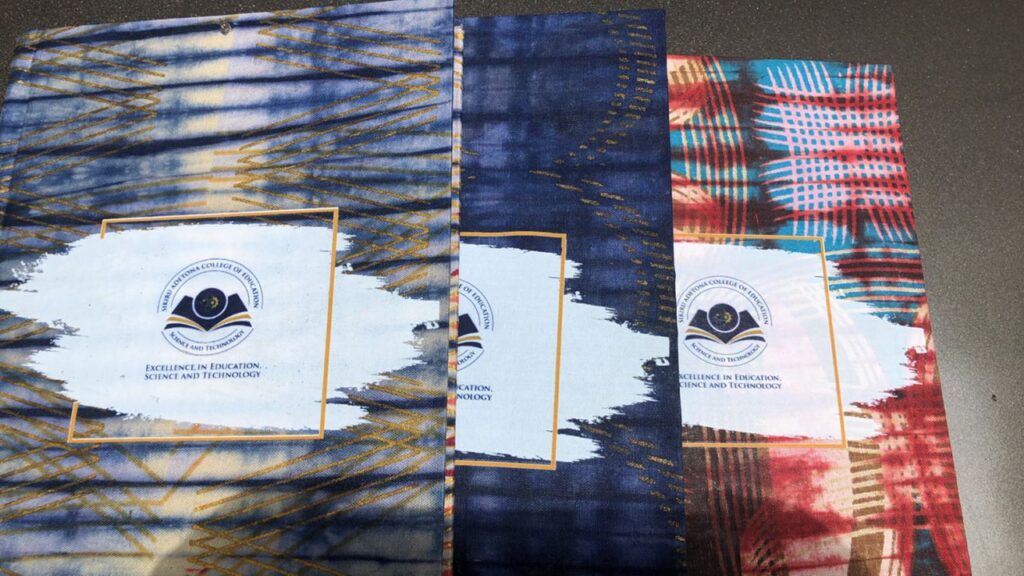
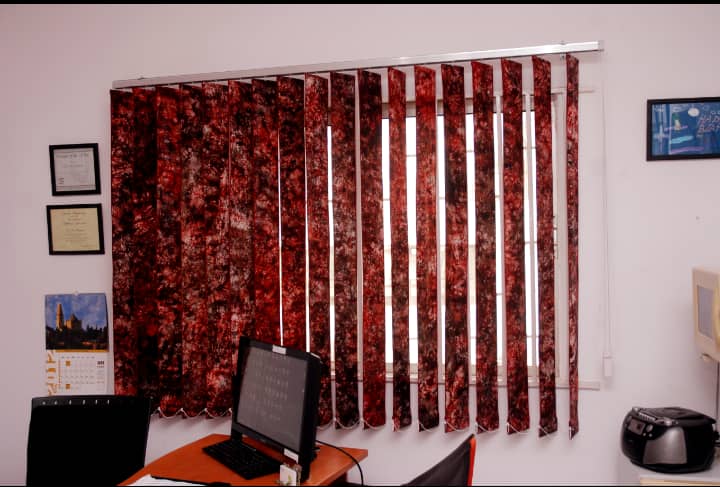

Have you checked out our social media? We’re on Facebook, Instagram, Twitter, Linkedin, Pinterest etc.
References
[1] Wikipedia – Adire (Textile Art)
[2] African Research Review: An International Multidisciplinary Journal, Ethiopia Vol. 7 (2), Serial No. 29, April, 2013:350-370 by Areo, Margaret Olugbemisola and Kalilu, Razaq Olatunde Rom
[3] The Guardian – A Short History of Adire
[4] Emur Ogumor (1993:110). Certificate Art for Junior and Senior Secondary School. Ibadan: University Press Ltd.
[5] Mgbakoigba: Journal of African Studies, Volume 4, 2015. TIE – DYE (ADIRE) AMONG THE JUKUN PEOPLE by Gausa Solomon and Abubakar Ezra
[6] Tie-die US – Tie-dye Through the Ages – A History of Tie-dye
Building Amazing Living Spaces With Quality Made in Nigeria Products
[dropcap custom_class=”normal”] Our living spaces or working spaces are a reflection of who we are. If you don’t believe this, just do an assessment of your day to day activities in relation with the environment you spend most of your time and the outcome there of.
There’s a saying that whatever good thing we build ends up building us – Jim Rohn. I absolutely agree with this as it applies to almost all aspects of our lives.
It is important to keep this in mind when we build or design the interiors of places we spend quality parts of our days. The ambience of a place adds to the quality of life. It helps in finding a balance between work, friends and family.
We understand this and believe you can achieve such with these suggestions for a perfect home makeover we have brought you… [/dropcap]
Continue reading
Adire Cloth in Nigeria : A Book Review on Adire Textile
[dropcap custom_class=”normal”] Adire cloth (pronounced Ah-DEER-eh), is one of the many African textiles I really love. It is quite versatile and I love the way the patterns can be so simple and yet unique. It is an age old textile of African origin which has been brought up in several discussions for many years.
With the changing times and discovery of newer findings, a revised edition of old Adire cloth publications is a welcome introduction to our knowledge accumulation. Adire is a Yoruba word for indigo-dyed style of fabrics, it is so unique that it can be considered a form of cloth art…. [/dropcap]
Continue reading
Meet The Founder Of Tǽillo | Exclusive Interview
[dropcap custom_class=”normal”] It is with great pleasure I want you to meet Jumoke Dada, a lovely and focused lady who is the Founder and CEO of Tǽillo. Jumoke has a great vision for the future of Nigeria and Africa which she has translated into her furniture.
She makes exquisitely crafted furniture using Aso Oke and Ankara fabrics. These furniture forms one of the best use of creativity in aesthetic ambience, that I have come across where furniture is concerned.
Because these fabrics not only carry the essence of our African heritage but also comes in various beautiful colours, I will say, Jumoke has gifted us with a modern antique of our time. I know you want to meet this specially talented lady. Let’s meet her… [/dropcap]
Continue reading

